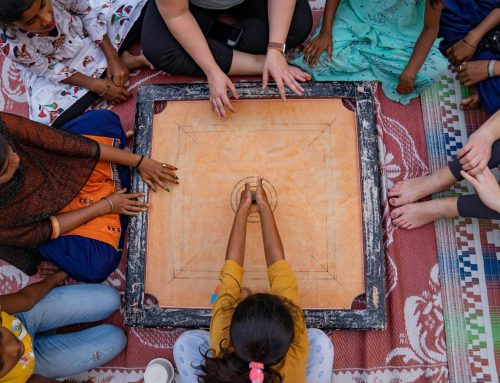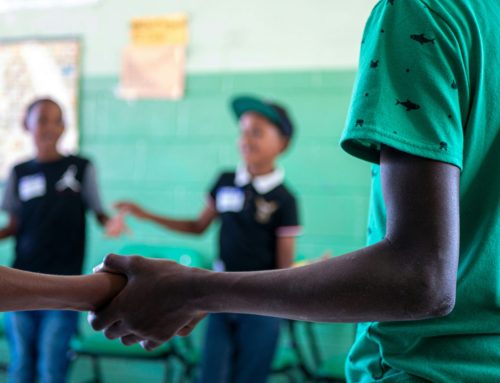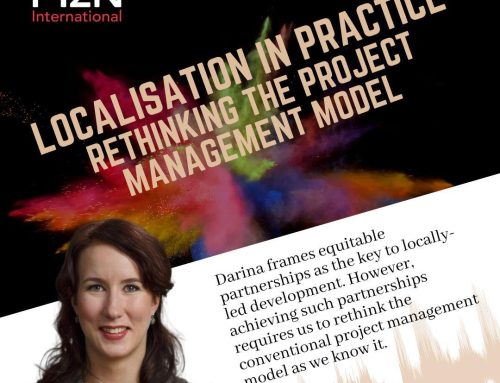The funding environment is changing. More donors parcel up their programmes into enormous grants requiring the grantee to subgrant and/or act as a fund manager whereas other donors are distributing smaller grants, which put an unfeasible administrative burden on the teams to apply and service. However, there are also more donors who want to be deeply involved in the work of an NGO and co-develop programmes together to deliver both the NGO and the donor’s mission.
We note that many of the most successful NGOs that are financially resilient share some critical elements:
- they have a strong and diverse funding base, a good deal of which is unrestricted,
- some or all of their restricted funding is flexible, long-term and matched to the organisation’s vision,
- some or all of their donors are really invested in the organisation and its mission.
Many NGOs rely on responsive fundraising – that is: waiting for calls for proposals from donors to be released and developing a project that fits the donor’s aims and objectives, geographic location and budget. Yet to diversify your donor base with good-sized, longer-term, more suitable grants and potentially core funding, you need to be more propositional. This means really understanding your niche and vision in the context of the market you operate in, approaching the right donors, persuading them to support your specific vision, co-developing programmes together and nurturing the relationship into the long term.
Here are five steps to support your team to fundraise proactively:
1. Start by examining your organisation
It is important to know your organisation’s niche – what you are great at and known for. Many organisations apply for projects which are outside of their specialism and fail because they have no track record or clear external positioning. Those who win the bid, on the other hand, are known to be specialists. Look at what your organisation does well, what capacity you have, and what lessons past projects can teach you about what has – and hasn’t – worked. Also, look at what your partners and competitors do and where there might be a gap for your organisation to work in. Consider what makes your organisation unique and best placed to do certain work. Do not be afraid to get the honest views of external stakeholders.
2. Work out what you want to fund – what’s your strategy and ambition?
You should be clear as to what your strategic priorities are and what ambitions need funding in particular. From this, usually with a team brought together from across the organisation, you should map out what your ambitions for change are: asking who you will target to work with, what is the change in their lives you want to help bring about, and what your interventions will look like. Again, talk to external stakeholders about what they are doing, and consider how your interventions might learn from, or complement, theirs. Some of our clients use systems mapping and stakeholder mapping as tools to understand the opportunities and barriers to change and where their interventions may be best targeted.
3. Develop your case(s) for support and value propositions
Cases for support use all the above information (about your niche, experience, aims, approaches and theories of change) to sell your organisation and your idea to a donor or partner. They are not fully developed programme propositions; rather they are a conversation opener, aiming to lead to co-creating programmes with the donor.
Your case for support both tells your story and sells your idea. It should draw together all the facts that make your organisation, work, cause or project worthwhile and present these clearly and concisely so that potential funders, donors, sponsors and supporters understand the features and benefits of your work, how it complements their own missions, and how they can best provide support. In just a few pages, and in clear language without jargon, it should contain:

A value proposition is a short sentence that summarises your work and aim. Despite development work being complex and multi-faceted, it is important to have an ‘elevator pitch’ to frame and introduce your organisation or programmatic strategy. The audience will be able to quickly understand who you are, why you are communicating with them, and will likely want to hear more. Use a simple structure like: We help (X) do (Y) by doing (Z).
4. Find the right donors to suit your organisation and programme area
Understand the donor and funding environment through donor mapping, partner networking, and looking at funding flows. You want to find out which donors will be prioritising your thematic and geographic areas in the coming few years. Narrow down your top donors and find out more about them.
Once you have identified a donor, researching what they do and how they work is key to understanding whether they will be a good fit for you and how you might approach them. Some key questions to explore are:
- What are the results/impacts they are measuring?
- In what ways are their other grantees similar/different to us?
- Are they already known to us?
- Do we know why previous applications were successful/unsuccessful? Do they have cross-cutting themes (e.g. gender, climate, justice etc)?
- Are there any eligibility or risk issues we need to be aware of?
- What is their grant-making cycle/process and do they accept unsolicited proposals?
Armed with this knowledge, you can tailor your case for support to their language and priorities to make it clear how funding your organisation’s work will help them deliver their mission.
5. Create the relationship
Like all relationships, a donor-grantee relationship is built on trust, understanding and a shared interest. This comes about by putting effort into building a rapport, communicating clearly, and demonstrating through your actions that you value their input (as well as their financial support). Developing a relationship built on trust can be as simple as picking up the phone and making a brief meeting, but in many circumstances, it can take a long time and ongoing effort. Your whole staff team should use this time to create other opportunities to coordinate and communicate.
Align your direct communications with wider messaging and specific 1:1 interactions to reinforce what they hear and believe about your organisation. This can include public communications, your messaging at events and conferences, and the conversations your other team members may have with them, for example, if they are an existing project donor or if you are both members of a network.
Fundraising and business development requires a collective effort and is ongoing – every interaction and message that any donor hears or sees from you can be beneficial for gaining support.
Proactive fundraising shares many of the same systems and actions as reactive fundraising does, but there are some stark differences that require support to understand and deliver. Though it may seem like a waste of effort to some, the benefits of finding the funding partners who will fight as passionately for your mission as you do are well worth it. If you need help with proactive fundraising, contact us and we will gladly assist you.





